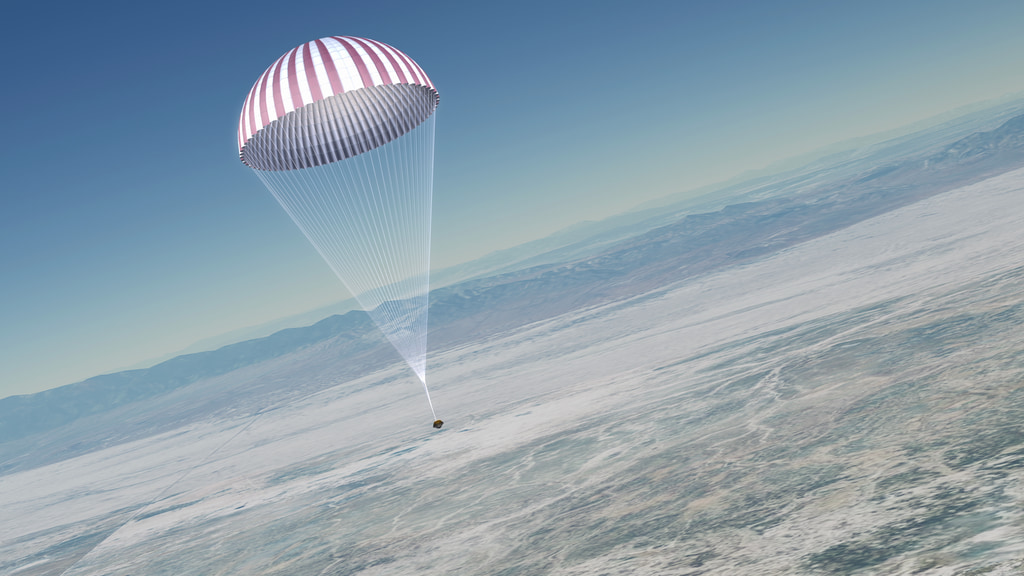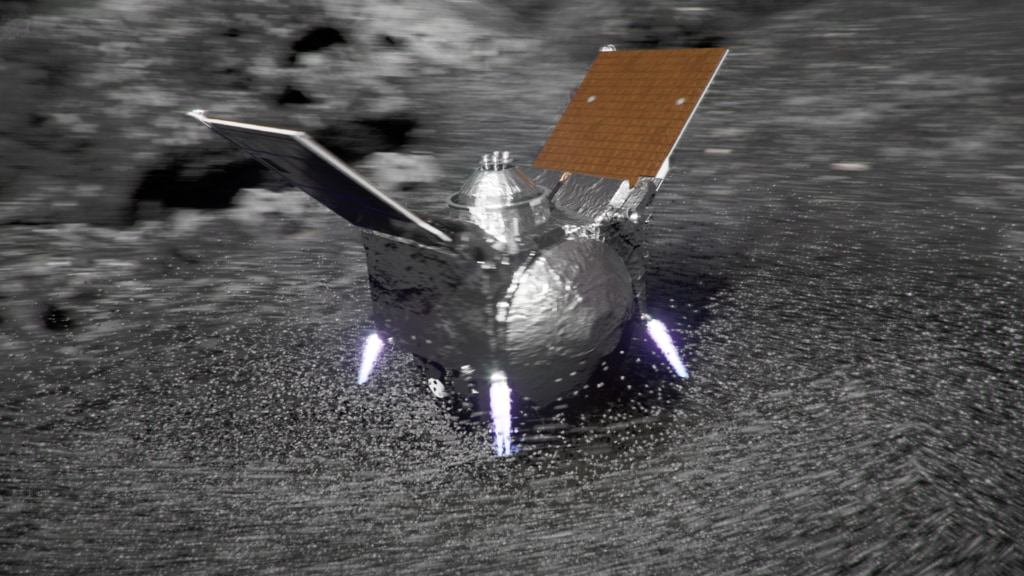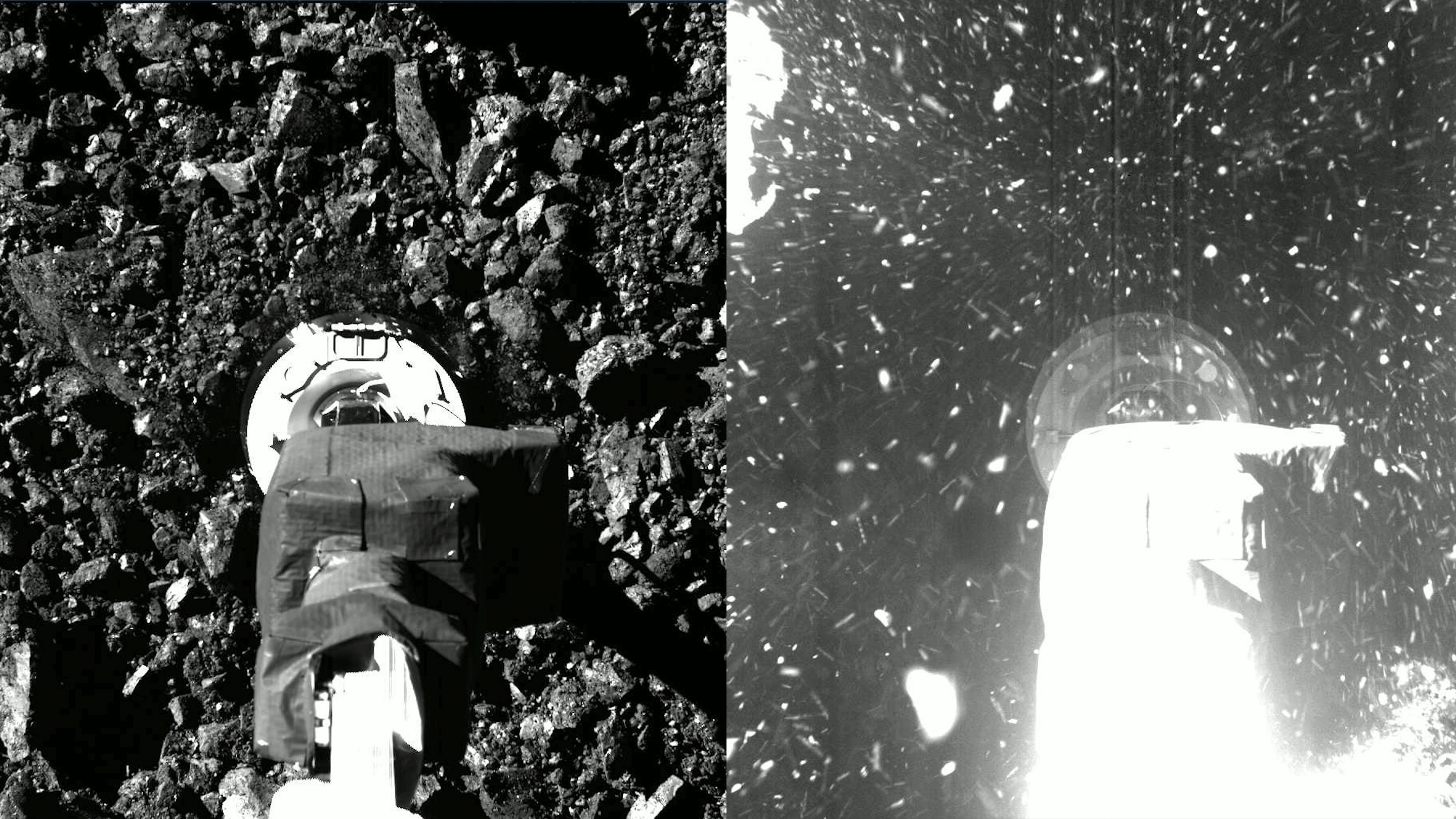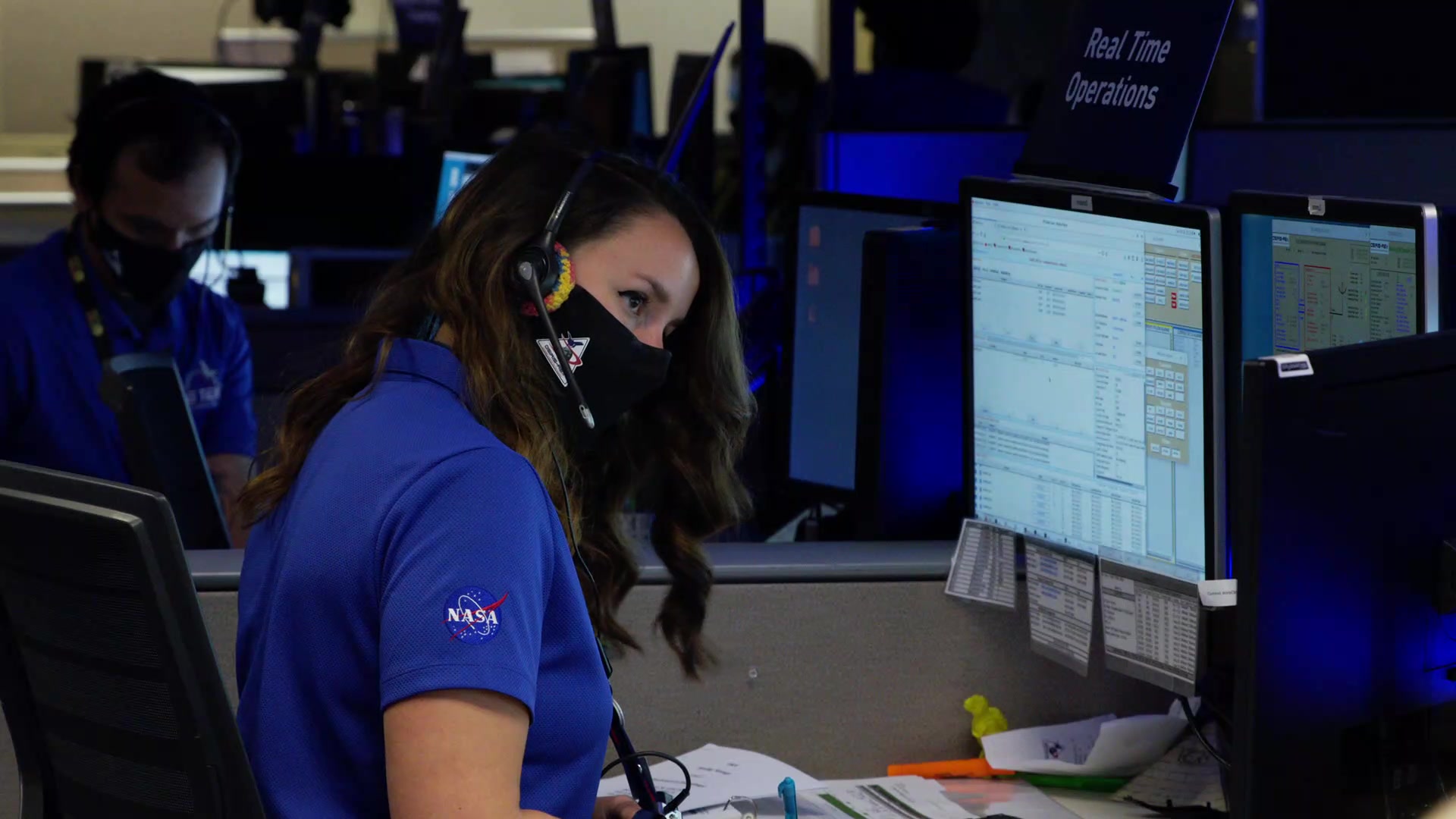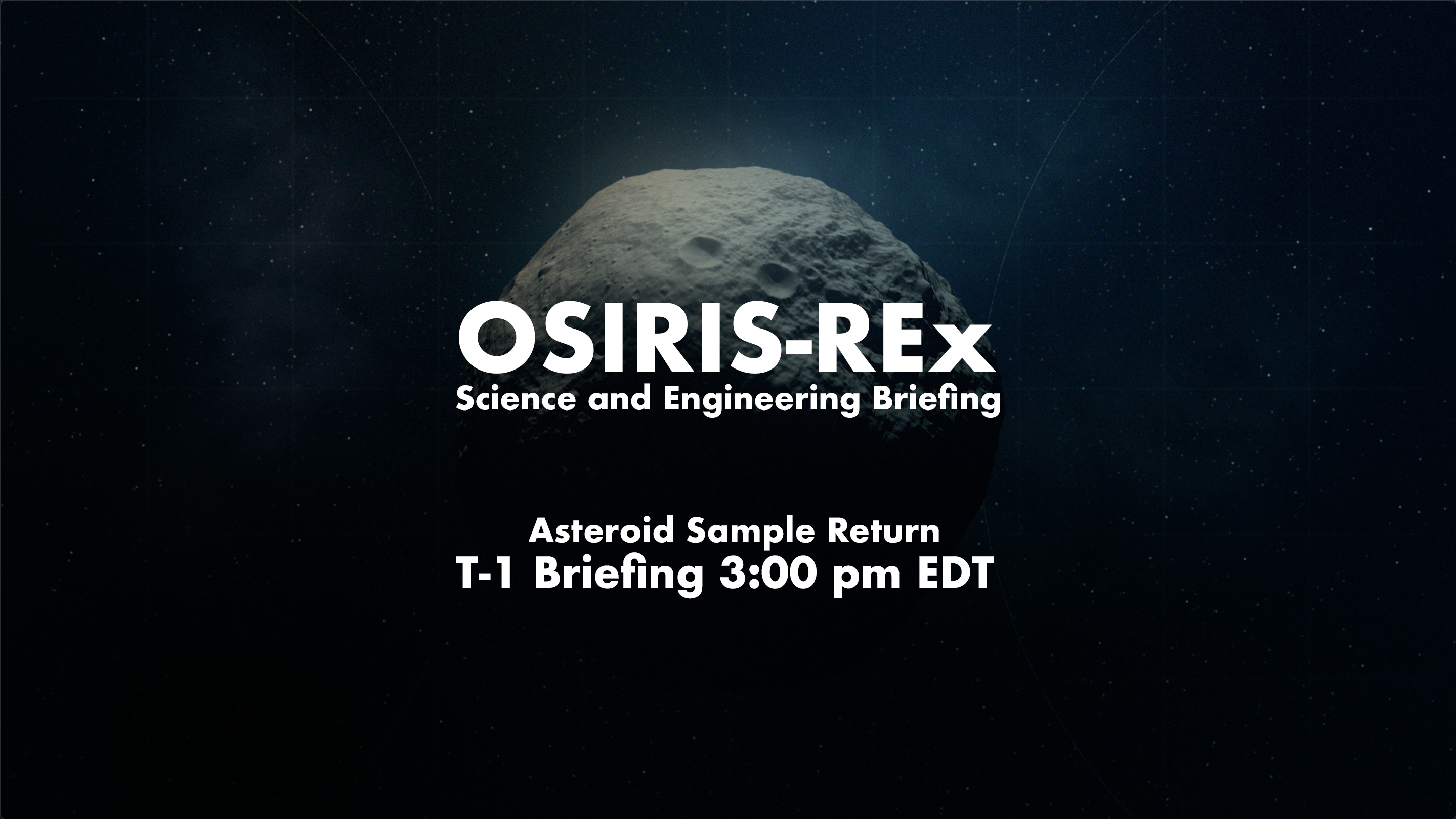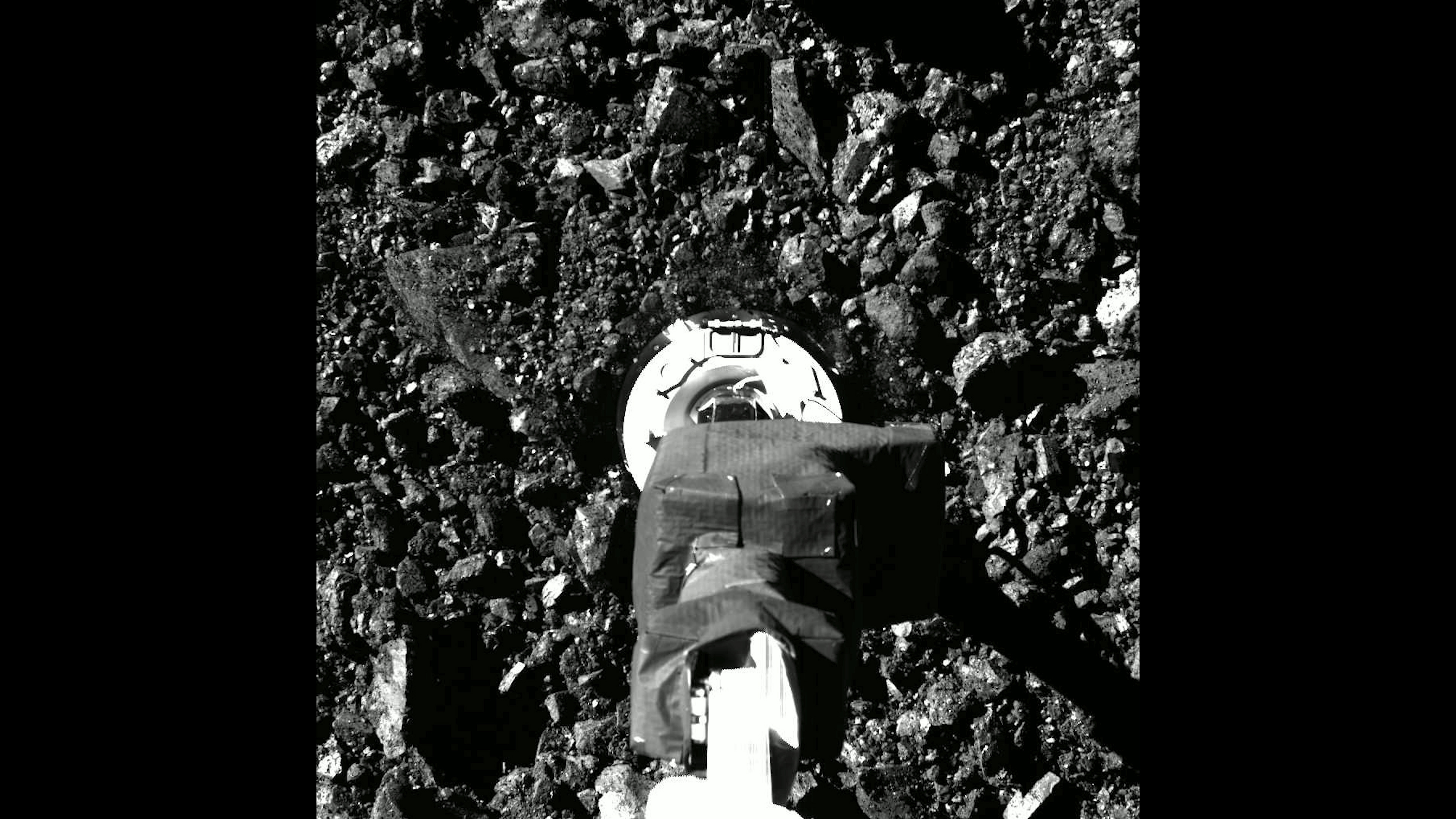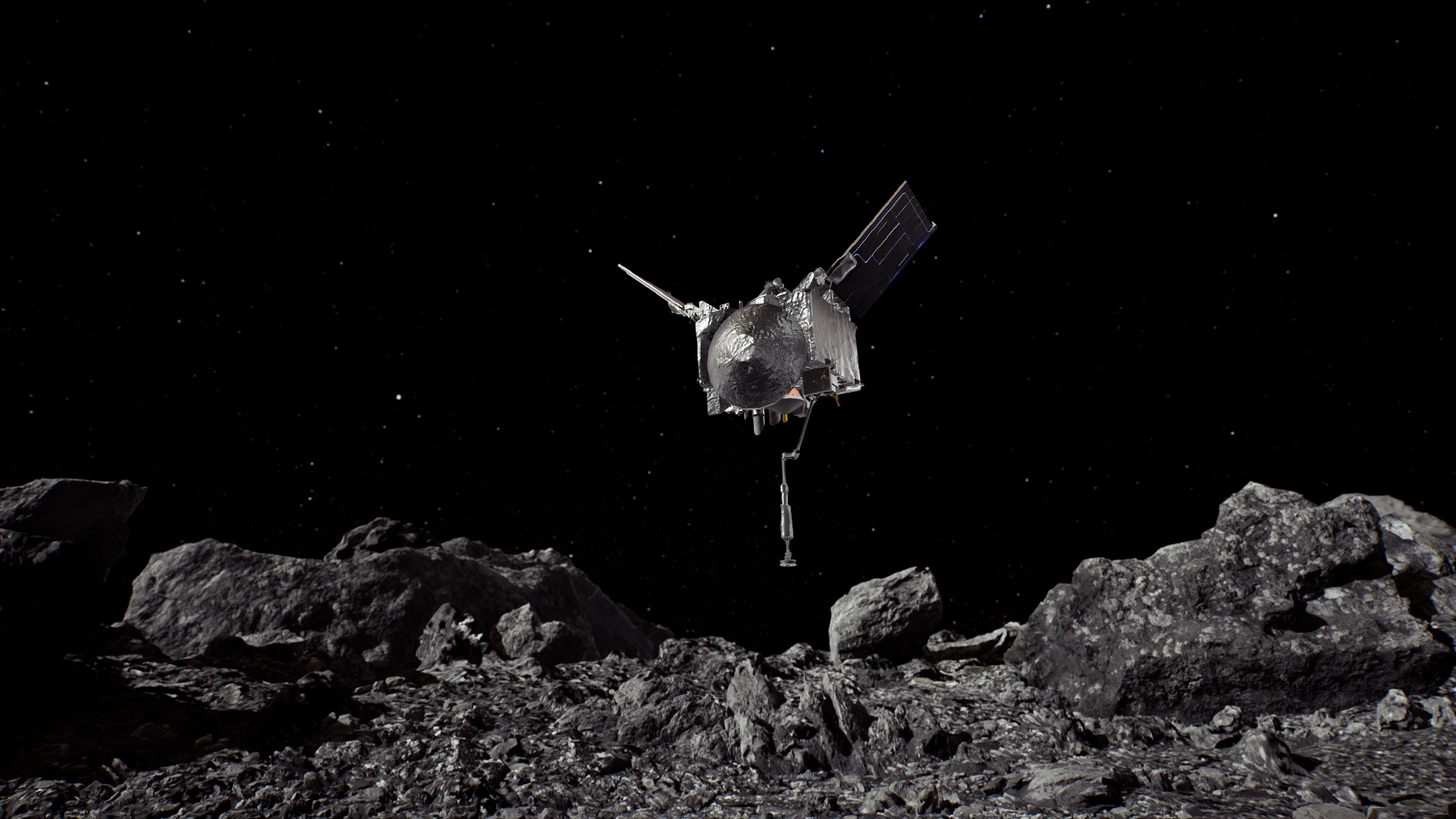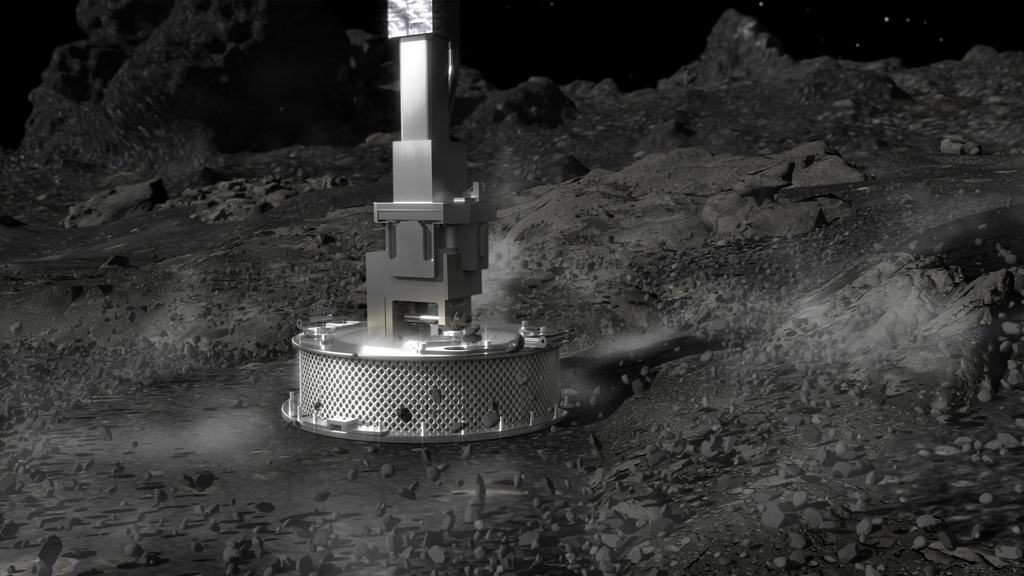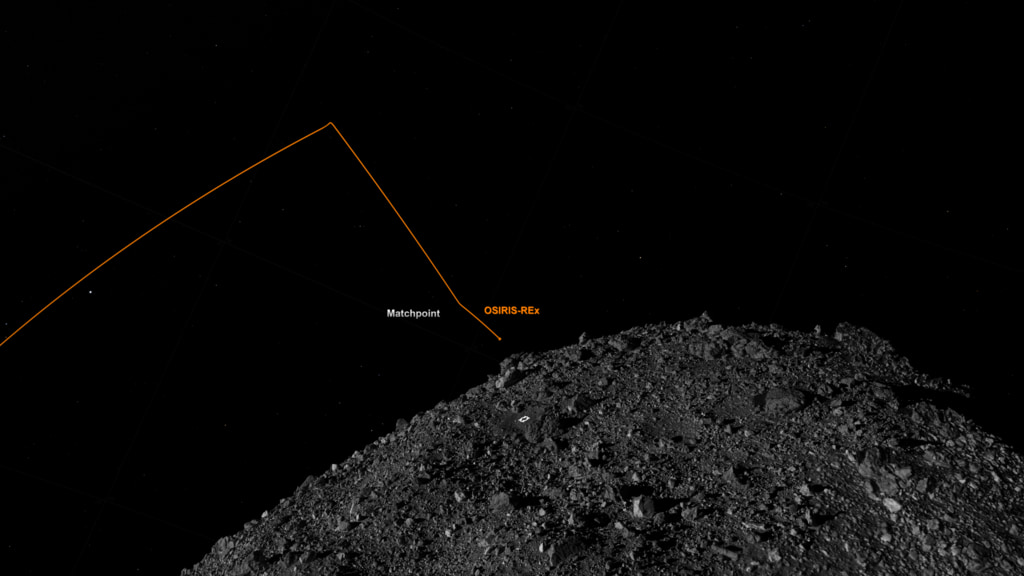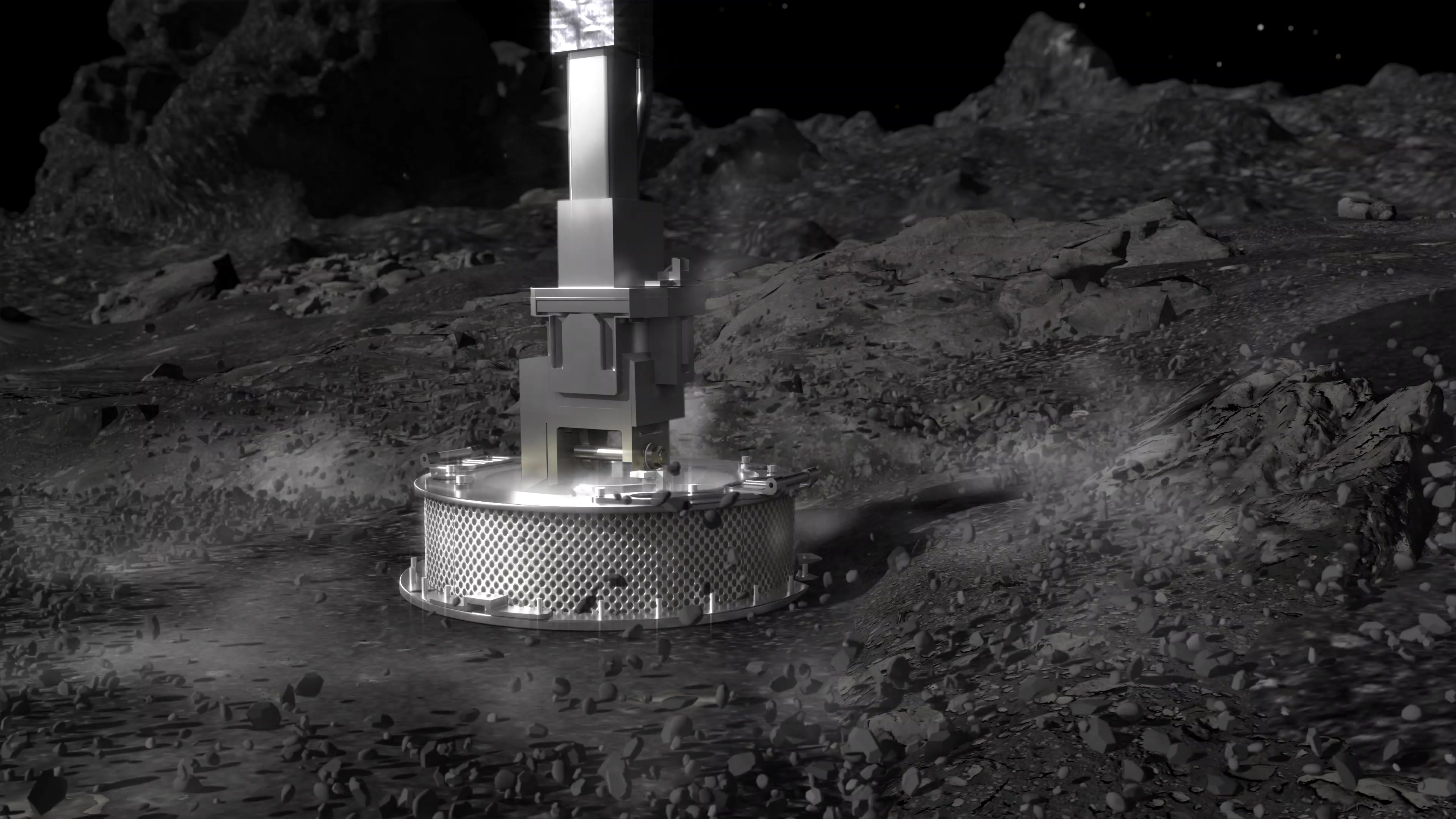OSIRIS-REx TAG Events
OSIRIS-REx Mission Support Area - TAG Sequence and Celebration
B-ROLL
OSIRIS-REx, which is about the size of a 15-passenger van, is currently orbiting the asteroid Bennu 200 million miles from Earth. Bennu contains material from the early solar system and may contain the molecular precursors to life and Earth’s oceans. The asteroid is about as tall as the Empire State Building and could potentially threaten Earth late in the next century, with a 1‐in‐2,700 chance of impacting our planet during one of its close approaches. OSIRIS-REx is now ready to take a sample of this ancient relic of our solar system and bring its stories and secrets home to Earth.
OSIRIS-REx TAG Event: NASA's First Asteroid Sample Collection Attempt
Live Broadcast - October 20, 2020
Watch this video on the NASA.gov Video YouTube channel.
OSIRIS-REx Post TAG Briefing
Live Broadcast - October 21, 2020
Watch this video on the NASA.gov Video YouTube channel.
For More Information
See NASA.gov
Credits
Please give credit for this item to:
NASA's Goddard Space Flight Center
-
Director
- Michael Starobin (KBR Wyle Services, LLC)
-
Producers
- Rani Gran (NASA/GSFC)
- Ned Barbee (Lockheed Martin)
- Chris Tucker (Lockheed Martin)
-
Graphics
- Dan Gallagher (USRA)
- James Tralie (ADNET Systems, Inc.)
- Swarupa Nune (InuTeq)
-
Hosts
- Michelle Thaller (NASA/GSFC)
- Dante Lauretta (The University of Arizona)
- Nancy Neal-Jones (NASA/GSFC)
- James Tralie (ADNET Systems, Inc.)
- Gary Napier (Lockheed Martin)
-
Video engineers
- Pat Kennedy (KBR Wyle Services, LLC)
- Walter Lindblom (SAIC)
-
Technical director
- John Caldwell (Advocates in Manpower Management, Inc.)
-
Audio technician
- Alexander Velle (SAIC)
-
Broadcast engineer
- Don Garcia (Garceworks)
-
Nasa administrator
- James Bridenstine (NASA/HQ)
-
Presenters
- Thomas H. Zurbuchen (NASA/HQ)
- Dante Lauretta (The University of Arizona)
- Rich Burns (NASA/GSFC)
- Sandra Freund (Lockheed Martin)
-
Support
- Erin Morton (The University of Arizona)
- Rich Melnick (KBR Wyle Services, LLC)
-
Technical support
- Aaron E. Lepsch (ADNET Systems, Inc.)
Release date
This page was originally published on Tuesday, October 20, 2020.
This page was last updated on Wednesday, May 3, 2023 at 1:44 PM EDT.
